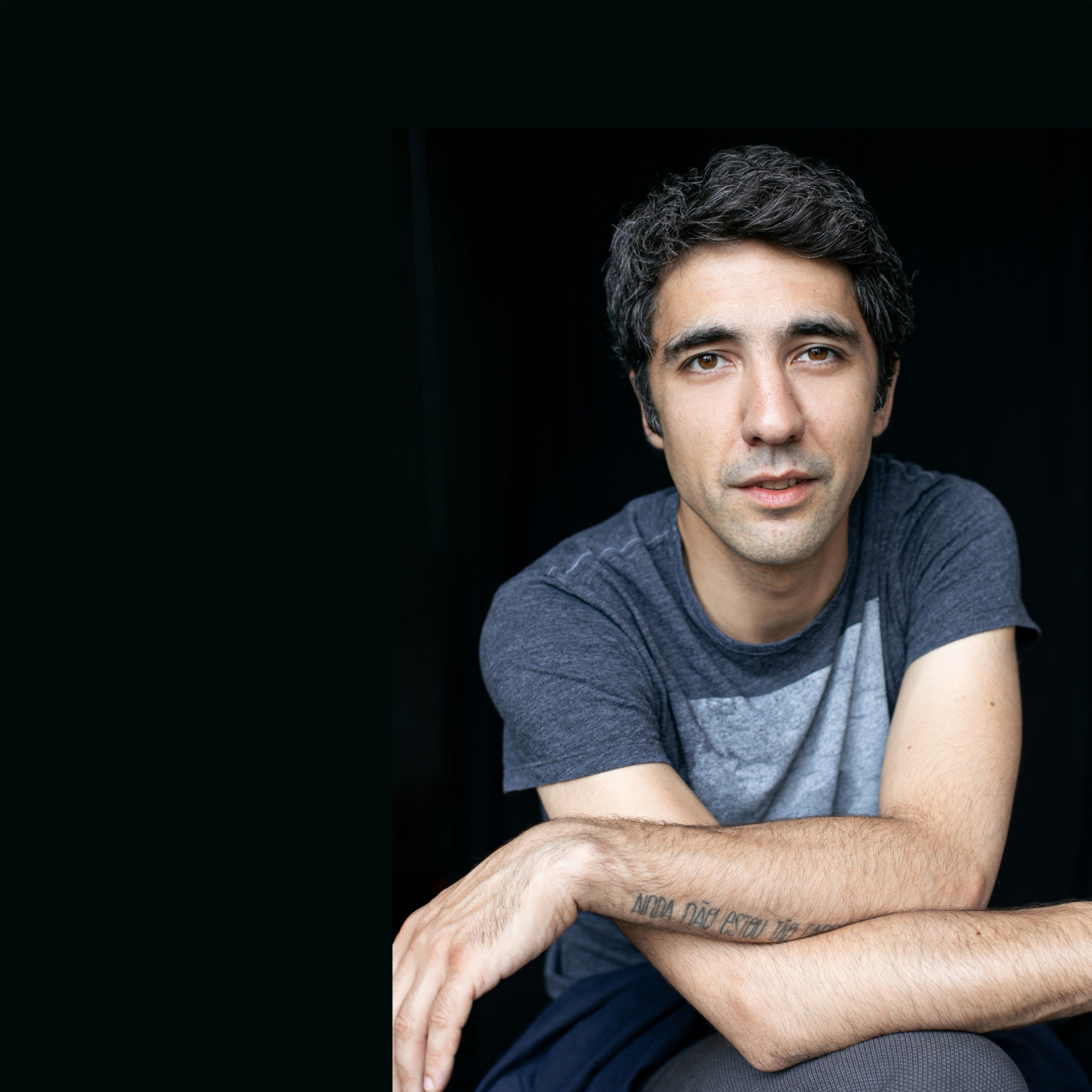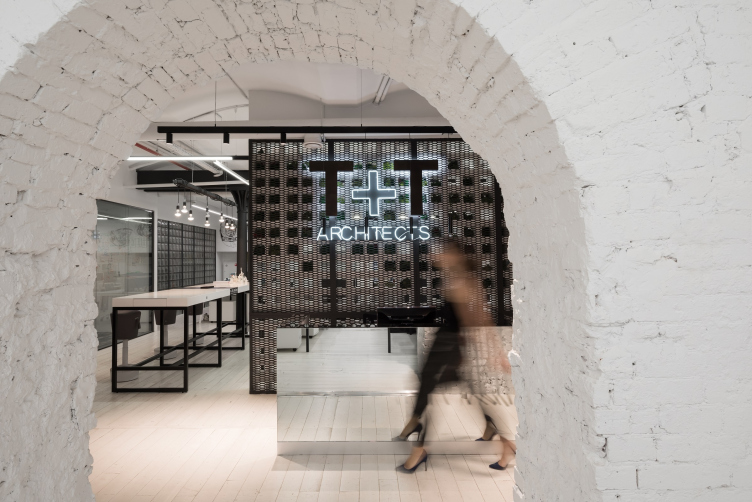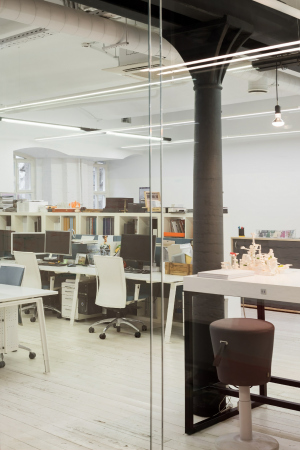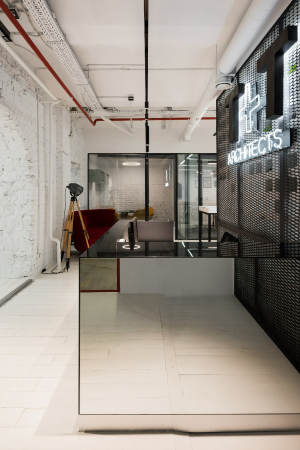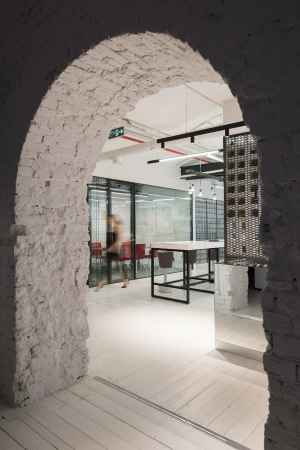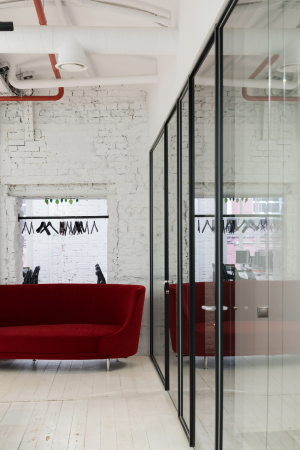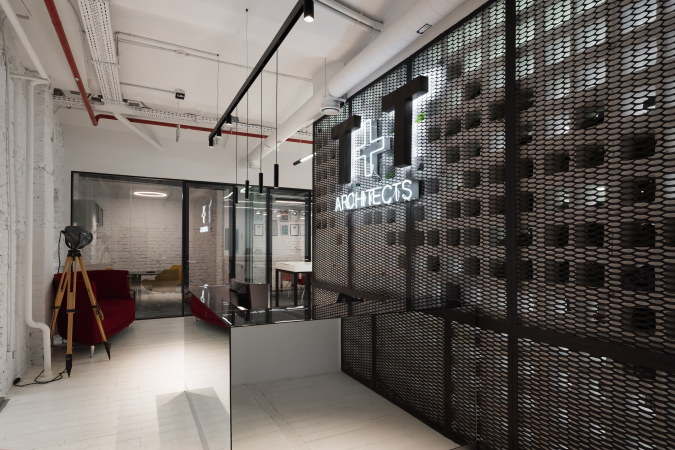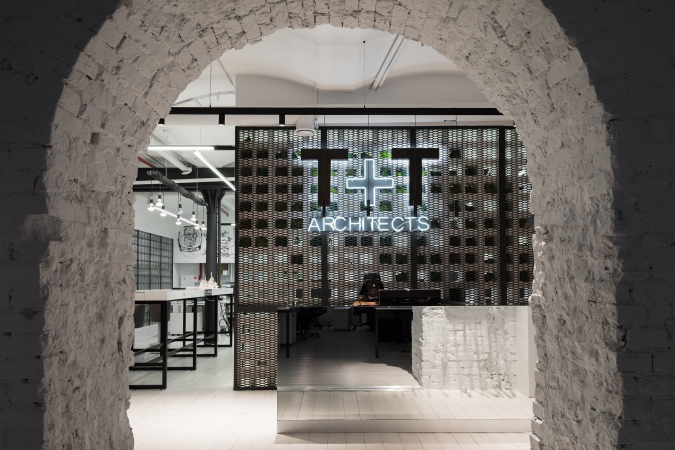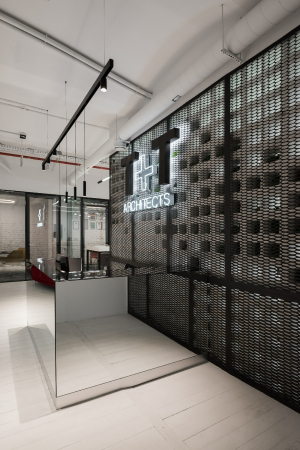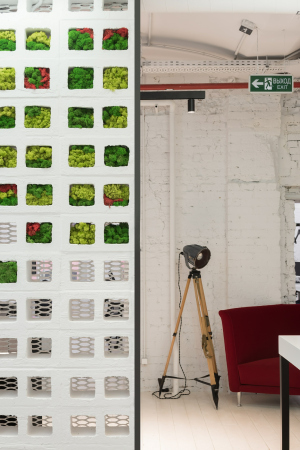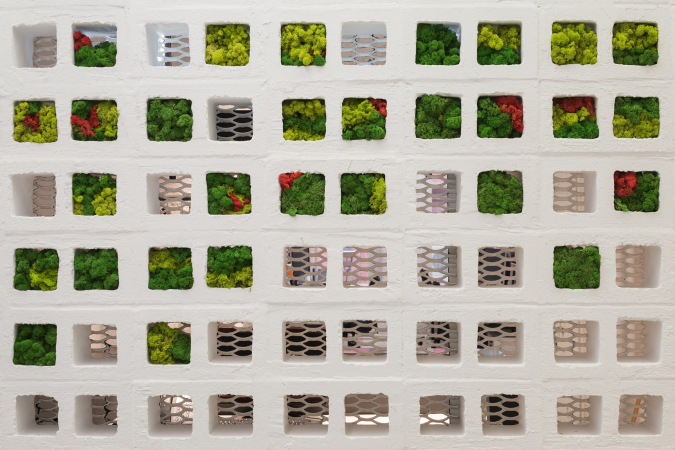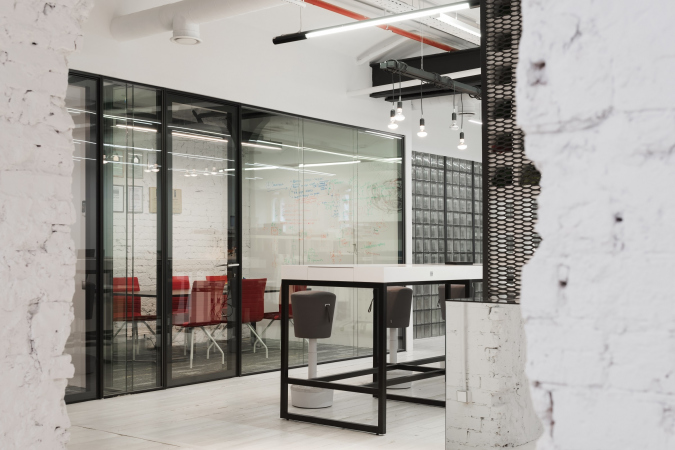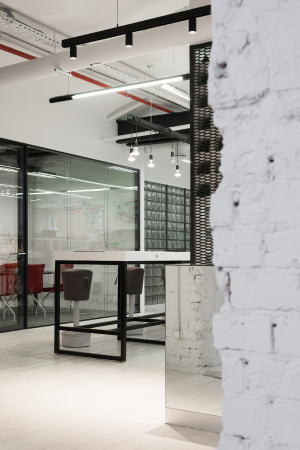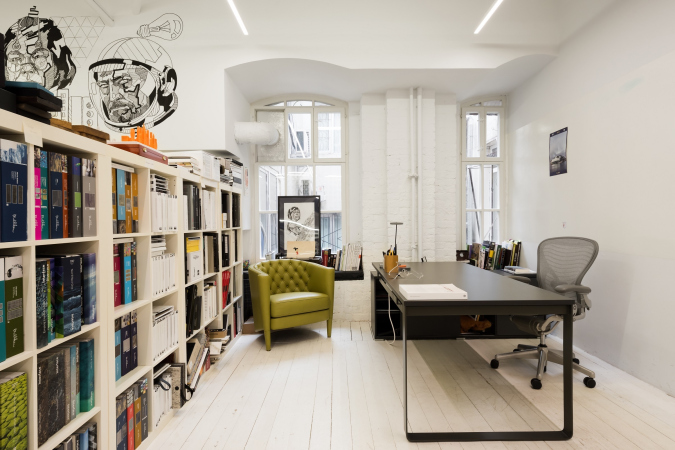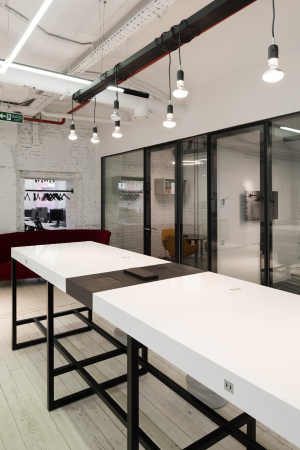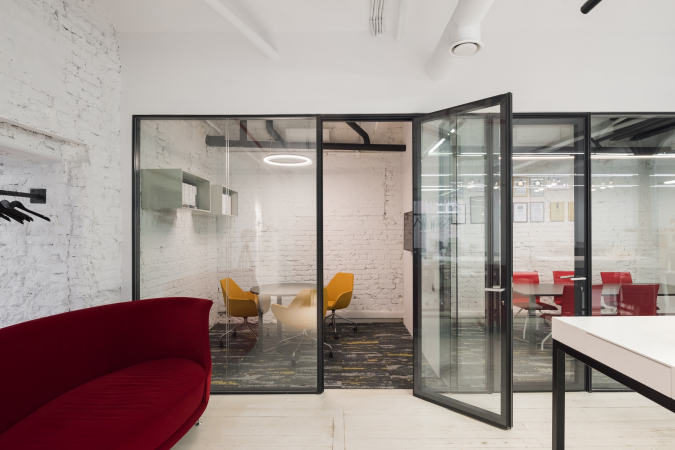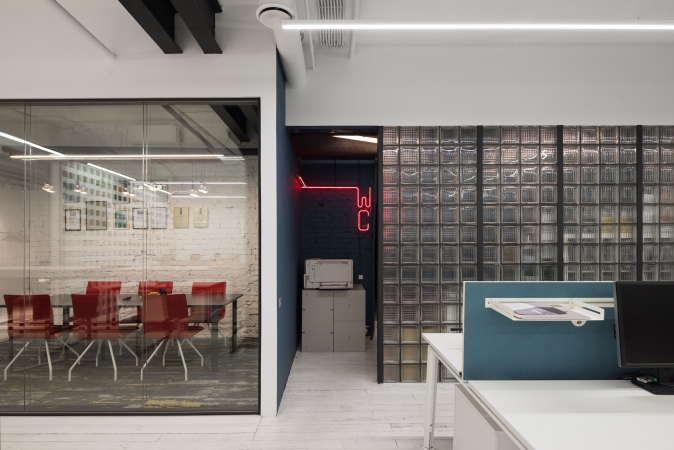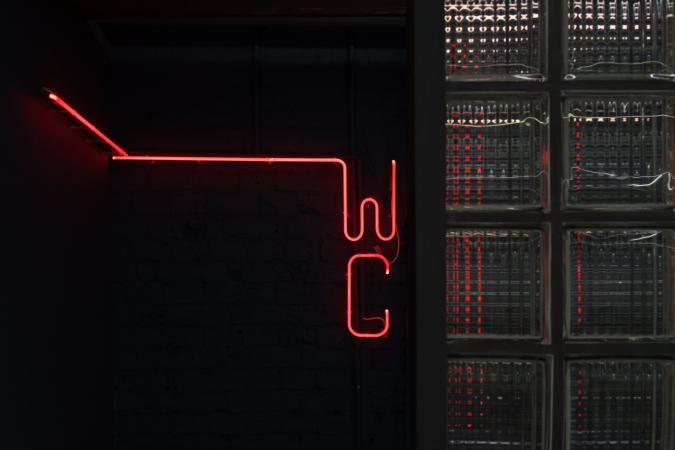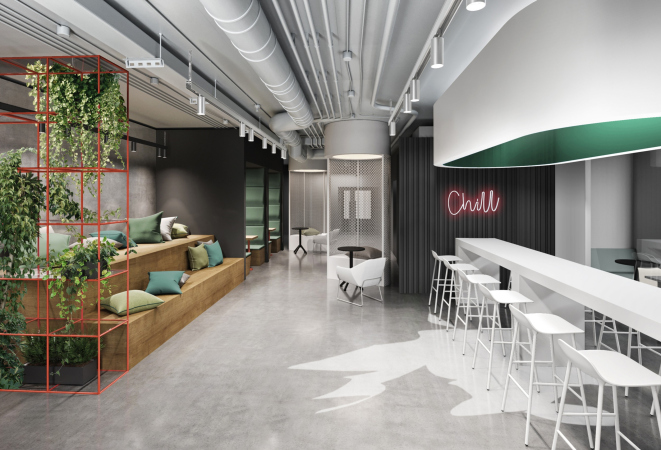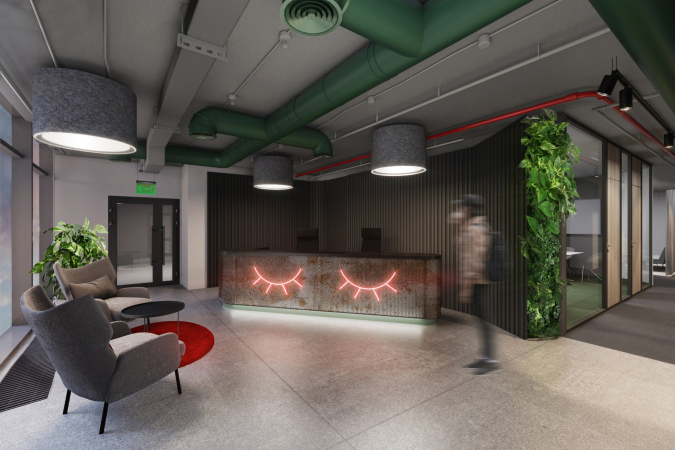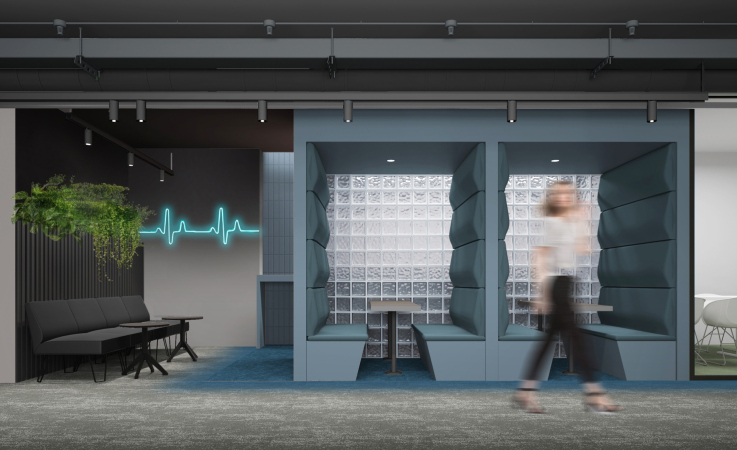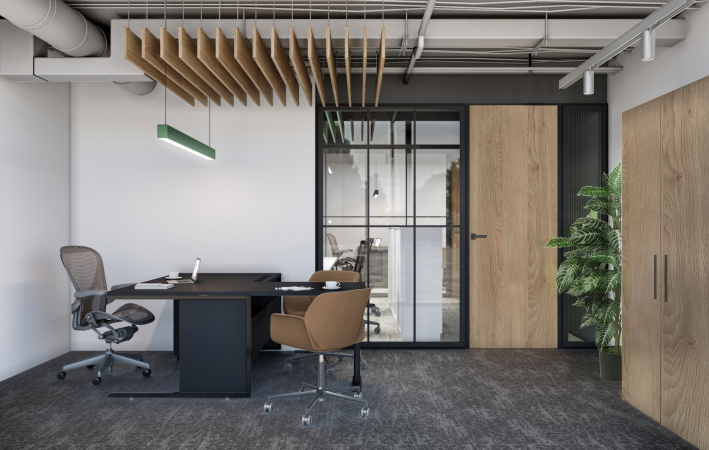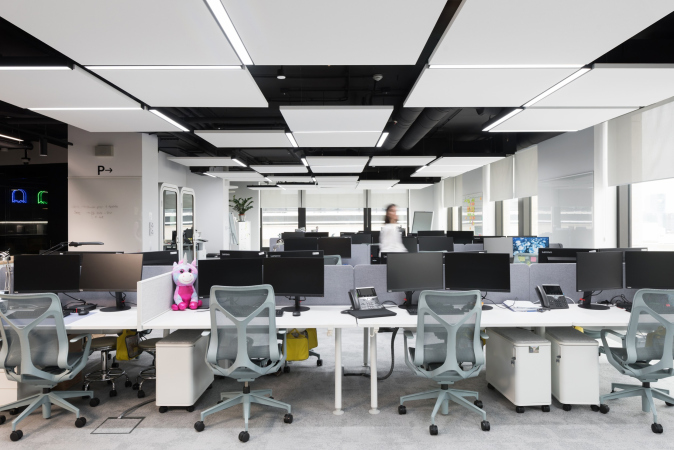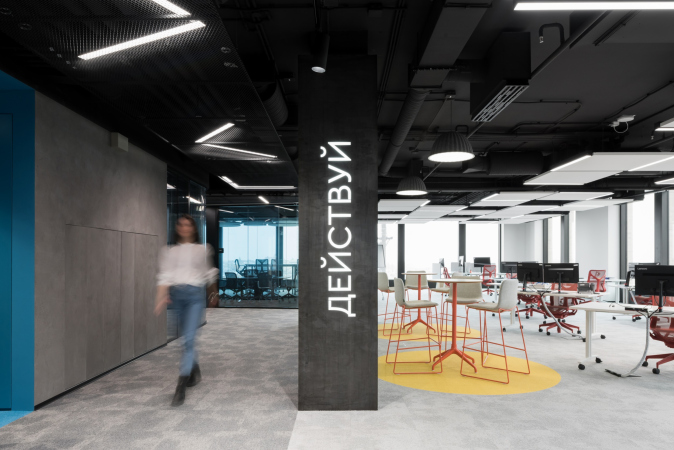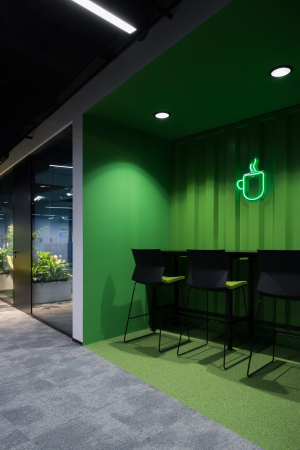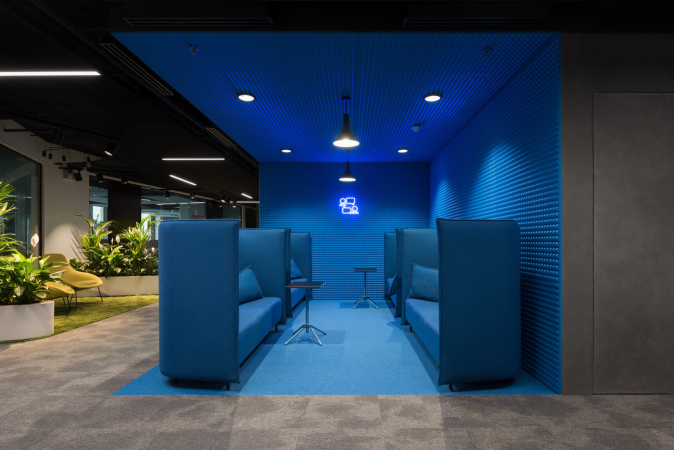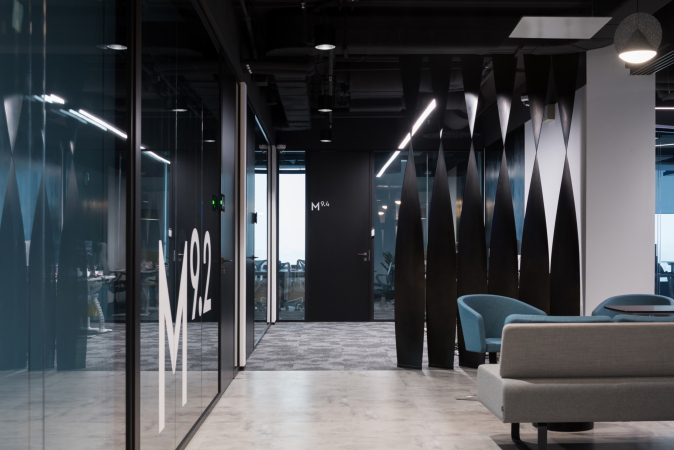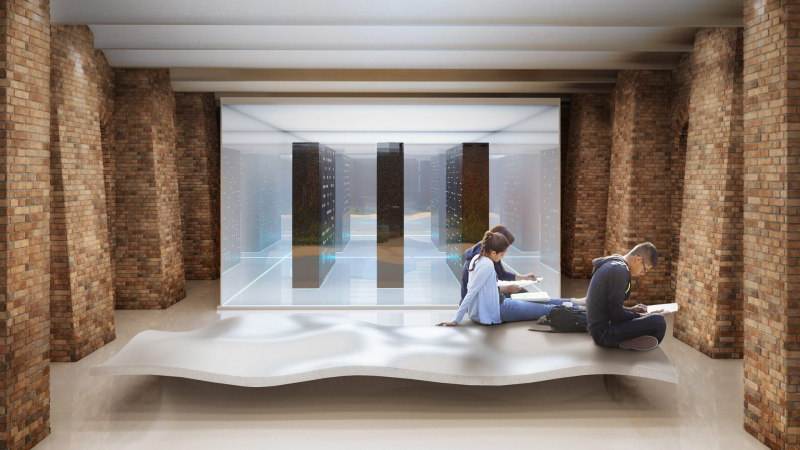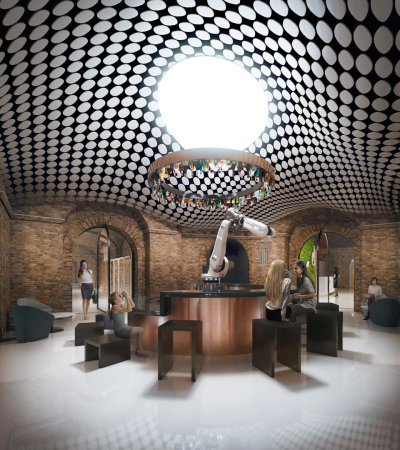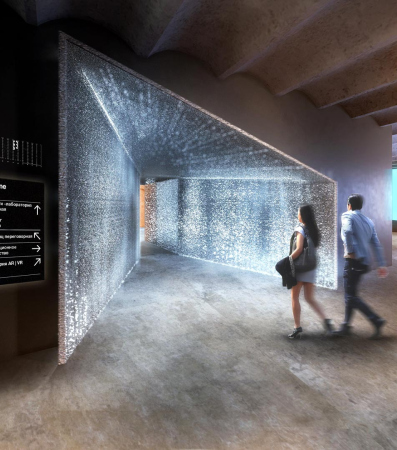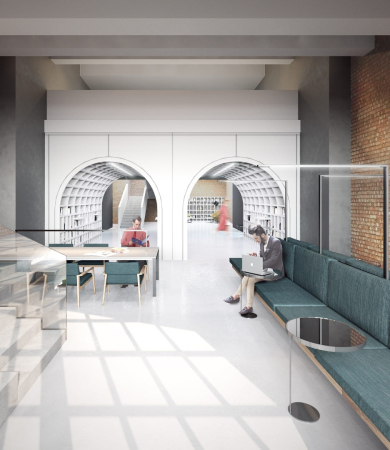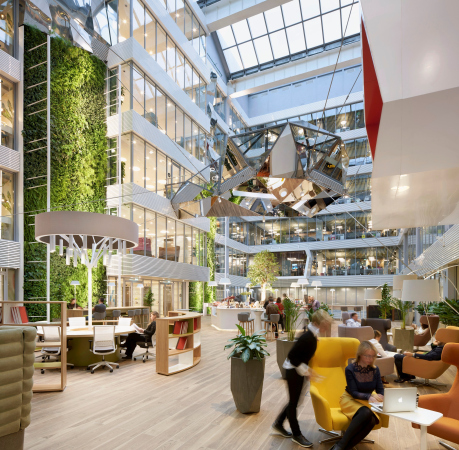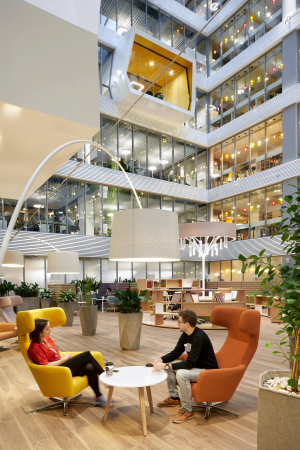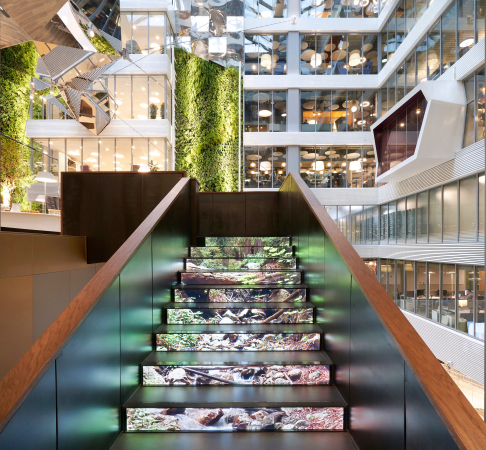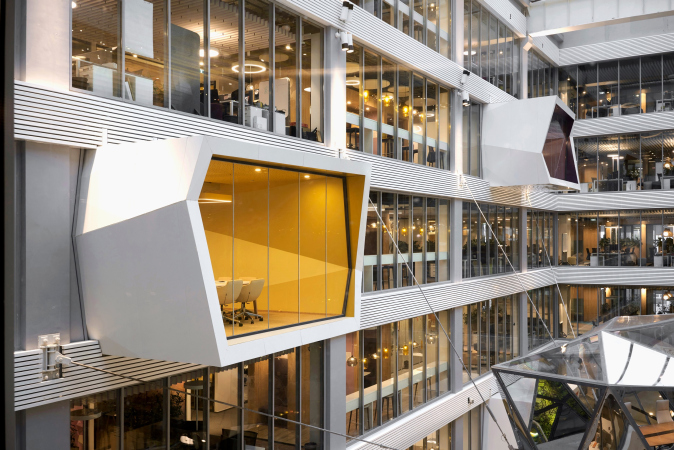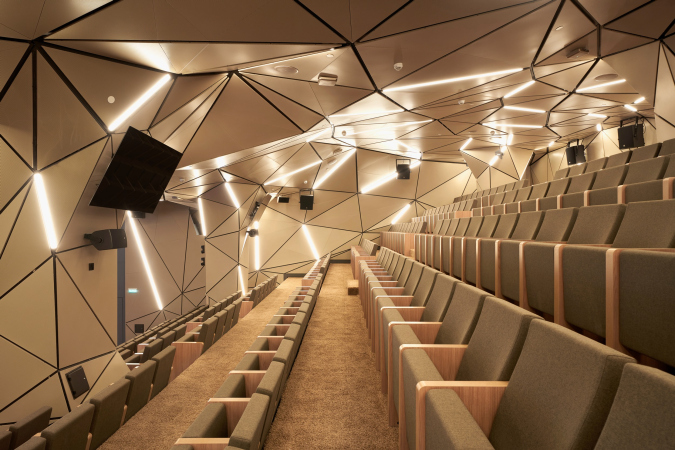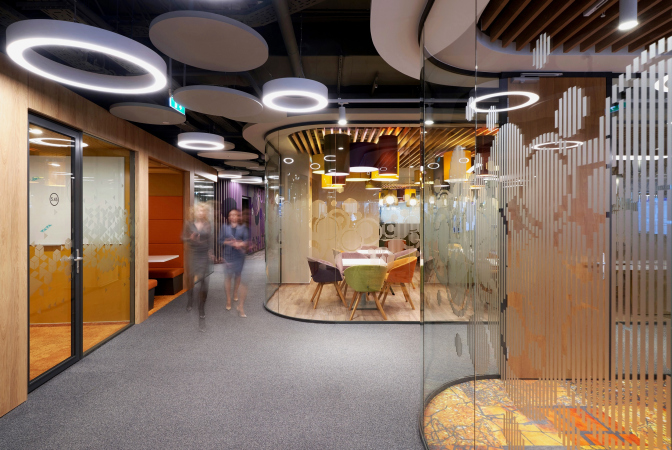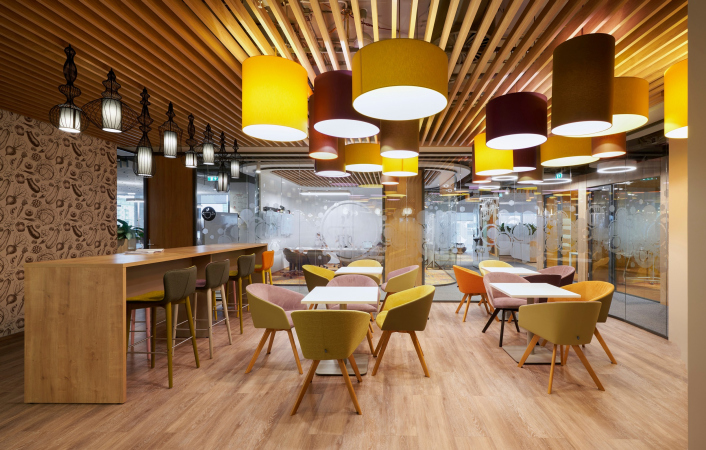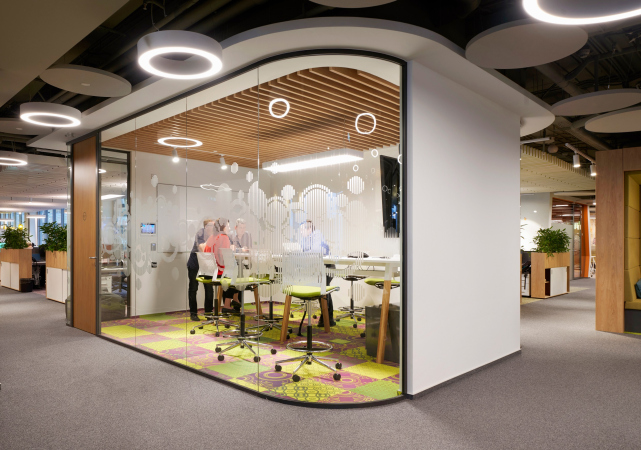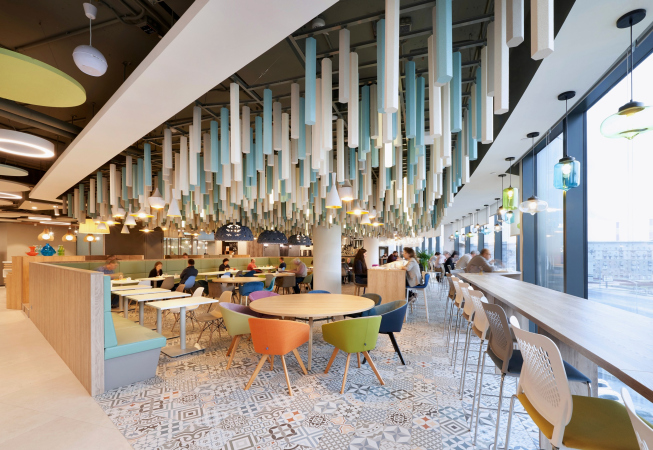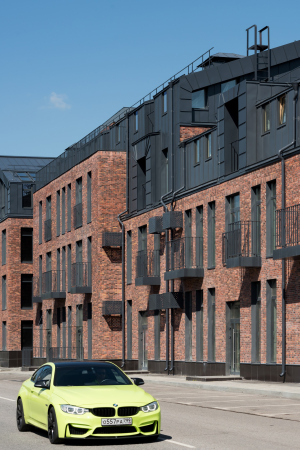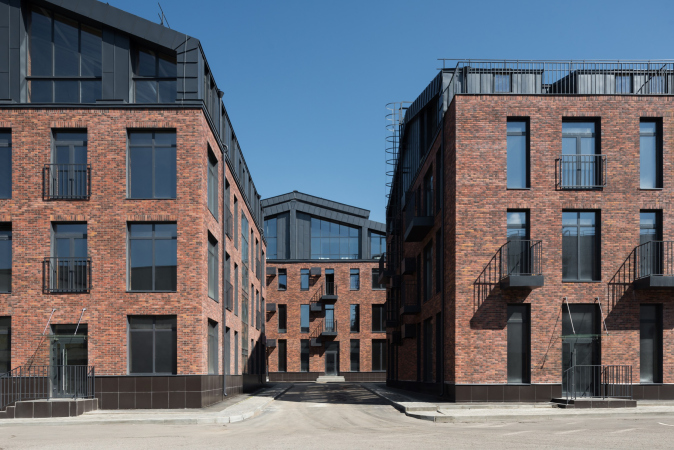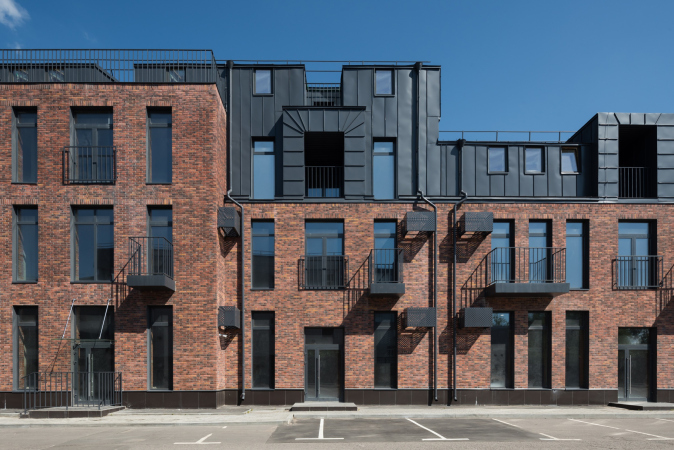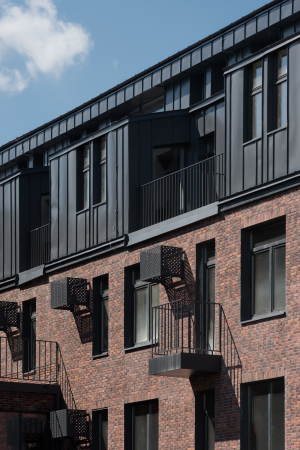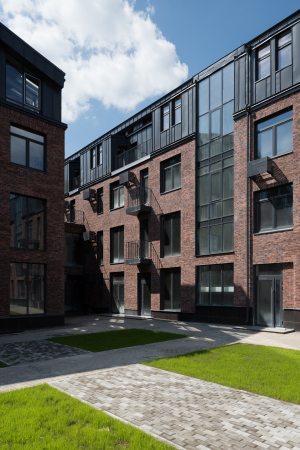This office at “Red October” – you moved into it quite recently, but why here? It’s understood that you were looking for an office in some renovated industrial park but why specifically this one?
Sergey Trukhanov:
We were looking for a suitable place both location-wise, and in terms of transportation accessibility. At the same time, of course, this place had to be interesting in itself. We considered premises at “Rassvet” (another business park – editorial note) – but all of them required serious capital investments in repairs and engineering. We would have to stay there no less than 10 or 12 years to get a return in investment. In the long run, we settled on this place at “Red October” – by the way, Strelka was headquartered here back in the day. However, what ultimately influenced our decision was a different thing: the old lady that ran the elevator said that this place used to be ladies’ showers. We at once understood that this was our place.
Did you have to change a lot around here?
Mainly, what we did was get rid of the stuff that we didn’t need – old drywall, which was sheathed with brick walls, and other partitions. The cast iron columns, however, were a different matter. The thing is that they are part of the old steam heating system: “Red October” had one of the first such systems in this country. Inside the hollow cast iron column runs a pipe that gives off heat.
Т+Т Architects office at “Red October”
Copyright: © Ilia Ivanov
The windows here are also original: at first, we didn’t even realize that, and, squinting at our neighbors and their plastic frames, we immediately wanted to replace these windswept wooden things with stained glass windows in aluminum frames. However, as it turned out, nothing was to be changed here – the entire building had a protected status. Then we started clearing them off, got down to the original frames, and invited a restoration company to have them restored.
How is your zoning organized? What I see is clearly visible meeting areas, but I don’t seem to see the director’s office...
Left of the entrance, we have an architectural department, right of the entrance – the interior design one. In the middle, there is a main communication zone – the bar table. This is both the place for formal meetings with watching presentations on the big screen, and a place for informal communication and making parties. I didn't really want a personal office for myself, so I opted for a remote and secluded corner, yet still in an open area, so as not to lose visual contact with my colleagues. Everything is as democratic as possible, and I can always reach anyone I want, while the others can approach me at any moment if they have a question to ask.
A standard question: how did you survive the lockdown? As it turned out, even within our small branch of architectural design it worked out totally different for different companies: some were quite happy with working remotely, and are now thinking about moving to a smaller office, and some, on the other hand, complain of low efficiency of remote work...
The way it turned out, we were fully prepared for such a situation operation-wise, management-wise, and technically as well. We had long since been organizing our business as a standardized and sometimes automated process that did not require any excessive manual control. The big-scale infrastructural software, which was written specifically for our company, and which has been developing with us since 2014, ticks a whole range of boxes for us – from financial management and accounting to goal setting for the projects and tracking their fulfillment. If this or that issue is within our set workflow, it is solved automatically. All of our communication goes through this program, and, since we managed pretty much everything through web services, we continued doing the usual thing.
However, we experienced a terrible lack of live communication and exchange of ideas. When you work with a great number of concepts, each of which requires an individual approach, it is very important that the whole team be in contact with each other, everyone must be on the same page, and everyone has the same vision of your end goal. Calling up a zoom conference, trying to get your point across, and making sure that everyone is on the same page as you – all of this slowed down the workflow and complicated the quality control. In order to achieve the KPI on a par with that of the “peaceful times”, our average employee had to be at their desk from 8 in the morning till 10 in the evening. It’s a lot easier when you can get together live and discuss things together. We soon realized that we missed this a lot, so, after the restrictions were lifted, it took us less than a week to get back into the office groove. It turned out that most of us were pretty social. At the same time, the teams and the employees who were doing long-term but purely technical assignments, felt great about working remotely, and they were the last to come back.
Did you change anything in your office due to the COVID-19 situation?
Nothing at all, for the exception of the general rules on daily temperature taking and regular testing! Although I am not COVID-dissident, and I stayed at home for almost three months, I think that the basic system of habits that has formed for years, as well as elementary hygiene, will help us overcome this panic. I think that, barring a few adjustments here and there, we will get “back to normal” by the beginning of next year. On the other hand, co-working spaces will be in much more demand because essentially they are a rather flexible service. They will be easier able to react to the stiffening of cleaning and social distancing protocols. Currently, by the way, they are just finishing the construction of one of the coworking spaces in the BusinessClub network in the OKO II business center built by our project.
This is a large space for projects of such a format, more than 6,000 square meters. It offers both individual workspaces and meeting rooms for project groups. The thing is that when it comes to co-working spaces, particularly large ones, it is hard to find a happy medium between the working “business” mindset and an informal environment. Usually, this balance is maintained by a smart combination of different zones and technical equipment. We installed soft furniture with noise-cancelling properties, and complemented the finish with window walls. The interior decoration is not overburdened by color highlights or excessively bright elements. All of this allowed us to create a flexible product that can be easily fine-tuned depending on the changing situation or requirements.
Generally speaking, the concepts of flexible offices are getting increasingly popular. An office where the resident can choose not just the workspace but also the format and the content of this workspace both for themselves and for their working group, will be gaining more and more momentum. What matters here is the possibility for joint work, zones for individual or concentrated activity, as well as different formats of meeting rooms and booked offices. Special attention is given to service areas that tackle both utility and working issues. These are the locker rooms, showers, gyms, and even classrooms, which can be transformed into meeting rooms or large presentation areas.
And, if we are to get back to the subject of “post-COVID” adjustment of regular offices, once were we approached by our other client, Gaspromneft, on this subject. For one of their projects, they asked us to develop a scenario of adapting the office in case of an epidemic. We developed extra planning solutions, describing which zones in such a situation turn into workspaces from public or structural ones. First of all, the distance between the workgroups must increase dramatically. This is how we came up with the options for composing the workspaces and maximum allowed limits for meetings (meeting rooms for three people max, workgroups no more than four people, etc.) Second of all, some potential gathering zones must be readjusted to yield more square footage – for example, the cafeteria, which can be compensated by an increase in the number of coffee points scattered here and there. Gyms can also be turned into large studies that have partitions splitting them into a few sections. And the directors’ offices, which also have to move, become meeting rooms.
We also paid special attention to calculating the operation modes of the utility systems. Plus, we worked out the operational schedules. For example, if we see that there is still not enough room for some of the people in the department as in the “pre-crisis” time, we switch them over to “2 days in, 2 days out” shifts, vacating extra workspace. And, we have to do Gaspromneft justice – they have already brought all these recommendations to the attention of all their divisions.
How did you nail such a big client?
We met them at the competition for the “New Holland” in Saint Petersburg, where Gaspromneft is organizing the center for innovation in the new renovated “Dom 12”. We did not win the competition, but the same department – the directorate for digital transformation – invited us to design their back office in the “Nevskaya Ratusha” business center in Saint Petersburg.
That task was interesting, on the one hand, because this was the office for a cutting-edge company that digitalizes everything you can think of. For example, before traveling to drill wells, the employees undergo training in VR rooms, where they work with digital twins of the complex equipment. On the other hand, due to the fact that the center in “New Holland” will open up sooner or later, a new division will come here, and this means that the office will be ready to get rebuilt. This is why, in addition to open spaces, designed for constant communication, we got a number of closed and clearly localized working areas that can be transformed into laboratories, studies, meeting rooms, and whatnot. As for the style, at first we wanted to do something in the vein of “Running on the Razor’s Edge” – some kind of cyberpunk, a techno drama with Chinese neon signs running the length of the corridor. And even in spite of the fact that eventually we softened the original design, we still ended up with a very emotional interior. For us, it was like an experiment of sorts: color coding of different chunks, and a crazy mix of different solutions in terms of materials and textures. The result looks “almost like CrosbyStudios”, as somebody commented on Instagram. At the same time, in some places we were able to create a really cozy environment, created with state-of-the-art technologies – “smart” light, “smart” climate, etc.
In addition to Gaspromneft, we have another “big fish” in our client portfolio – Sberbank. How did you make friends with EvolutionDesign, and what part of your project do you think brought you the victory in the competition for the HQ at Kutuzovsky Avenue? The famous hanging meeting room, perhaps?
For us, taking part in that competition was sheer luck. It was a miracle we found out at all where it was being conducted at that time. Then we got in touch with our Swiss colleagues, and we were like “you are handsome, we are awfully handsome, so why waste our time ©, you will need an adapting local company in any event”. It was them who came up with this meeting room, and Sberbank hopped on that wow-effect. And then we, together with the team of the client and the contractors, implemented the whole thing.
What was ultimately your area of responsibility in this project?
After the victory of EvolutionDesign was announced, it soon became clear that there was more to our task than just interior design. Concurrently, another company was doing the project of reconstructing the whole office-and-shopping complex on the Kutuzovsky Avenue (it used to be built by the project of Sergey Kiselev and Partners for MIRAX GROUP, and since 2016, it has belonged to PAO Sberbank, and is turning into “Sberbank City – editorial note). We always had to bother that company with questions: do you have this? Do you have that? When are you doing these things? And they eventually proposed that we design the entire volume – since we were so active and business-minded. Ultimately, we did the whole reconstruction project with all the ensuing consequences, such as expertise and working papers on various sections. At that moment it turned out that we were dealing with a unique project – because its basement part was more than 15 meters deep. Then all hell broke loose: scientific support of the construction, alternative calculations and, in general, the increased attention of the Expertise to us and our project. And as for the hanging meeting room, it was a battleground in itself! First, we hanged it on British-made wire ropes, then on French-made ones, but all the time something was missing – the Russian safety certificates, test protocols, etc. Ultimately, we found a Russian manufacturer that made wire ropes looking exactly like the French DETAN. A shouting thank you to SK “Struktura” because the results of the tests showed that their product was even stronger than the project required.
The interiors of Sberbank headquarters at Kutuzovsky Avenue, 32
Copyright: Photograph © Sergey Melnikov / provided by PAO Sberbank
It seems that in that project you broke a uniqueness record...
We sure did – because this place also has a unique conference hall added to it! In order to design that, we had to stop the whole atrium on the level of the second floor without using a single column. We had to come up with a very complex girder project with large-span constructions. And, most importantly, the hall had to meet the highest acoustic standards, compared to those that are expected from symphonic halls. Thus, we needed to marry this system of girders to the engineering and multimedia systems, and concert lighting and sound systems as well – it was an absolutely incredible mix of constructions! If you miss by 10 centimeters in your model, everyone is panicked and everyone is getting gray hairs: those who design metal structures, those who install sound and light, those who prepare cladding from 1380 (!) types of triangular acoustic panels that hide behind them all the utility lines. If just one component “slips”, everything else will follow suit. And it was such a challenge for every member of our team that when we assembled the model of this hall in its entirety in REVIT, and double-checked it for possible collisions, we literally burst into tears. At some point in time, our chief architect of the project realized that he was also the chief designer of the project.
And, although we are not the authors of the concept of the interiors or the facades, it was us who made this whole thing possible. We brought all of the solutions to one common denominator, made all the necessary elaboration, and issued the working documents, delving as deep as possible. Technically, it was a very complex and very interesting product. We realized that this was what the designer’s kick was all about – finding a solution to a problem that originally seems to be insurmountable.
And what about the Swiss? What are your impressions from working with them?
From the very start of the project, we had a good understanding, and they saw in us not just technical adapters, but full-fledged coauthors, in many respects trusted, and they tried not to slow us down in any way. And now this is how they write in all the applications for awards: “the Russian partner: T+T Architects”. And this is the main sign of success for us in collaborating with this international company.
We have an experience of working with the British, Italians, and Germans. As for the latter, for example, we are consulting a German company on the project of restoring the “Ambassador’s House” on the Povarskaya Street as a monument of architecture.
We have also released quite a number of projects of our own recently. We have finished the concepts of two high-end residential complexes and a housing project in Ekaterinburg, finished the decoration work in the public interiors in the Kutuzovsky XII housing complex for Capital Group, and a few office projects in Moscow and Saint Petersburg are neatly complete. We also finished the adaptation of the project of the winery, and we are supervising this project in the Crimea. We also completed the loft quarter Studio #12, which we started back in 2015 as a conceptual continuation of Studio #8. This format turned out to be very popular.
However, while on Sokol we had references to the artist village and its narrow streets, in Maryina Roshcha we had a more modernist narrative of a Star Town. The typology of the buildings changed, and the square footage grew bigger, with the houses becoming higher and deeper. More importantly, however, we were able to keep the idea of technical zoning and dividing the complex into a public and a residential part. There is a welcome public zone of this city block with low-rise construction, main planting, small architectural forms, and, of course, room for retail. The other zone is cozier; it is more private, and it is separated from the driveway. It also has less open spaces and plazas. There is a landscaped backyard, designed special for the residents. At the same time, the quarter is ridden with such passages, which just add up to an intricate pedestrian network, along which you can make your evening promenade.
I wonder if you will be able to create an atmosphere like in Studio #8. The reason I’m saying this is because the people in Maryina Roshcha are quite different...
Yes, a lot will depend upon the correct choice of residents. In the case of Studio #8, the developer made such a selection himself, and the fact that the project “hit the jackpot” as the infrastructure of the surrounding sleeping belt area is to a large extent to the development. If they keep up this approach, this project is sure to be a success. Currently, there are virtually no alternatives around the “Capitoliy” shopping mall, which has been accumulating the whole traffic in that area.
I remember you saying in one of our earlier interviews that the important thing was to find your niche and then develop it. And, at the same time, like in your case, this niche may evolve from public area development to commercial interiors and redevelopment. What niche would you like to occupy in the future?
Moscow has a program for the development of industrial zones – these are several territories marked in the master plan where production is preserved and it is planned to create technology parks and industrial clusters. We are currently working on one of such zones – #42. This zone contains a plant of measuring equipment that we need to preserve, car repair shops, garages, etc. The task is to unite them all into a full-fledged industrial cluster! And this is a new and unconventional typology – we are to arrange everything and create a comfortable environment for working and placing production facilities there, without adding in the housing function.
In addition, there are many artifacts situated here. For example, an old trolleybus depot with domed hangars is located nearby. There are also interesting samples of Soviet industrial architecture, which can be preserved and made into, if not iconic, then at least recognizable landmarks that will highlight the history of this area. Our vector of development has always been pointed in the direction of renovating industrial parks and architecture, and it remains this way, which is something that we are proud of. Come to think of it, over the last 10 years most Russian architectural companies have not had any “profitable” typology other than housing. Nobody took the industrial architecture seriously, but it has potential not just on a municipal but on a national scale. And I hope that this will become a large part of our work in the coming years.

